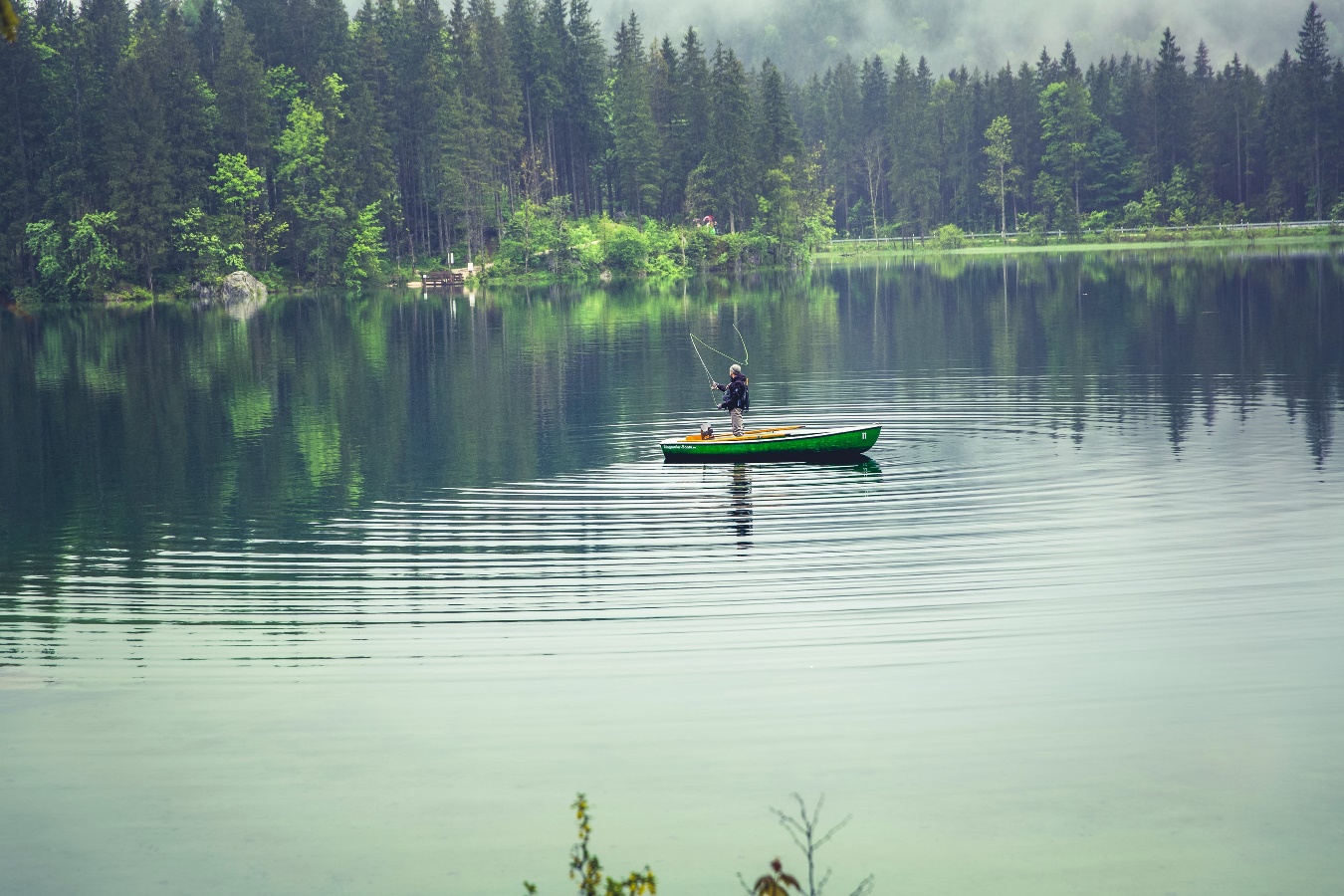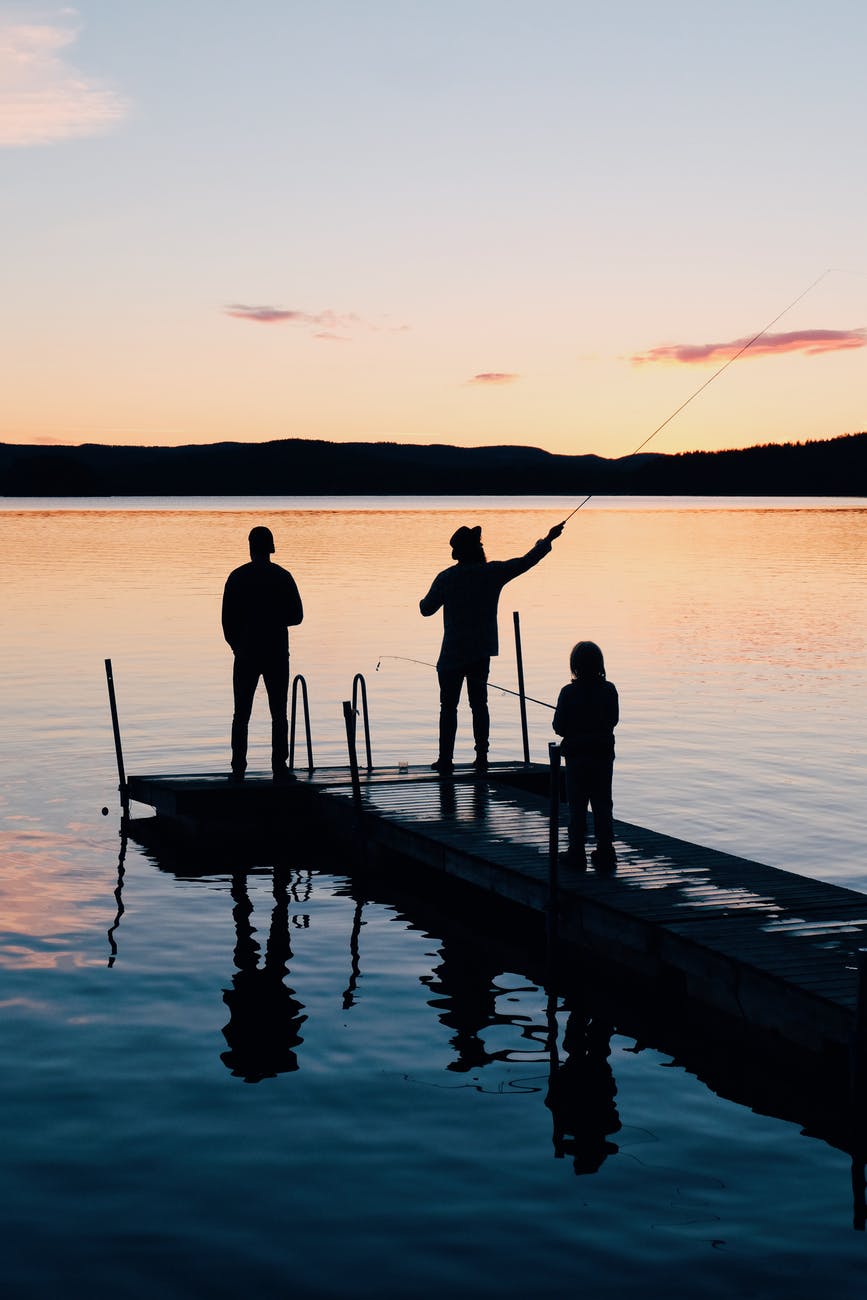For those who don’t know what fly fishing is, it’s a method of fishing which consists of using an angling method to cast the line, as well as using artificial bait (also known as a lure or artificial fly) to draw the fish’s attention.
There’s a huge difference between regular fishing and fly fishing. Firstly, the equipment is slightly different. You’d need a fly rod for fly fishing, a light-weight lure, and a specialized weighted line. This equipment requires a different technique when casting the line. When you are fly fishing, you try to send the lure through the air, and this is possible because of the line.

In regular fishing, the weigh of the lure and the sinker are the ones one deciding the distance the hook is going to travel.
The artificial fly.
The lure is also significantly different from regular baits. Artificial flies are made from materials to represent natural sources of food resembling potential saltwater and freshwater fish prey, including insects, crustaceans, worms, vegetation, and birds.
Flying fishers usually make their flies, and consider this an essential experience as they get involved with fly fishing. Customarily following a book’s pattern or drawing inspiration from nature, they attach elements like feathers, animal fur, and other materials to a hook to make it attractive to fish. The size depends on the size of the hook, and the fish you are aiming to catch.
The main tools to create your lure includes:
- A pair of scissors
- A vise
- Hackle pliers
- A needle or bodkin needle
- A bobbin
Check this page for more info on the matter: https://en.wikipedia.org/wiki/Artificial_fly
Of course, you can always buy an already prepared fly.
Casting techniques and customs
When you cast your line with standard equipment, you are relying on the lure’s weight as well as the sinker’s. When you cast with a fly rod, you are relying on the line’s power since the fly is light-weighed. That’s why the fishing line is tapered and heavier, to be more castable than your traditional line.
The way casting with a fly rod works is by using the impulse produced from base to top, as the waves travel through the rod until it throws the fly. The most common technique is the forward cast, where you put the flying rod over the shoulder, straight the line, and do a forward movement with your arm to release the saved force.
Many books teach different types of techniques using a diverse variety of gear. If you are looking to acquire great fly fishing books to learn from, this list has you covered.
It is said that fly fishers are always learning new techniques to improve their performance as they update and change equipment depending on their prey, the environment they are going to fish in, and the season. Professional fly fishers tend to group up with someone to learn and improve together, advising one another and competing for the best catch or casting technique.
It is a good recommendation, too, because of how usually a fly fisher gets closer to the water to get a better angle or to get closer to the fish and cast the line. If you, by bad luck, have an accident as you fish, having a partner will surely save your life. If you have an incident, too, which is pretty common, having someone to rely on can make a huge difference.

The Equipment
Since you can either fish in cold waters or warm waters, you’ll need to understand that, depending on the environment, the technique and the gear differ.
Of course, you’ll need essential equipment: A fly rod, a reel, a lure, and a fishing line. The price of such gear may go from $150 to $300 depending on the brand. You can always look for used equipment online for more affordable prices.
If you are wondering what type of fly rod and fishing line to buy, I recommend you to check this to get more info about it.
If you are fishing under cold waters, you’ll need something to keep you safe from its hazards. Special boots to avoid the water as you get closer towards your catch are an absolute must if you are aiming to fish in cold water.
Besides that, you’ll need your regular fishing equipment:
- Hooks to catch the fish
- A fishing line cutter in case you need it
- Sunglasses and a hat to get over the sun
- Sunscreen for the same purpose
- A tacklebox to save your gear
- And a first aid box for possible incidents.
Where to Start
You can always look for an ideal spot to start practicing your fly fishing techniques, or you can rent some equipment in a nearby place to get the hang of it and see if you are into it. Fly fishing is considerably harder than regular fishing. It requires more physical effort because of how many times you’ll be casting your fishing line. That’s why I always recommend people to try renting equipment before investing in it and see if they like it.
A farm pot is an excellent place to get started. It is a rather safe environment where you can learn the basics without investing too much time going to faraway places. Once you’ve learned to cast your line at least 20 ft away, it’s time to try and catch fish. Once you feel prepared, you can move to new places, like rivers, mountains, and lakes.
